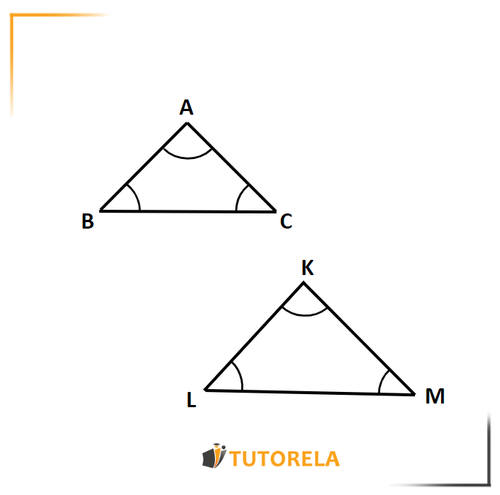The similarity ratio is the constant difference between the corresponding sides of the two shapes.
That is, if the similarity ratio is , we know that each side of the large triangle is times larger than that of the small triangle.
Similarity Ratio Practice Problems with Step-by-Step Solutions
Master similarity ratios with guided practice problems. Learn to calculate ratios between corresponding sides of similar triangles and polygons through examples.
- Calculate similarity ratios by dividing corresponding sides of similar figures
- Identify corresponding sides in similar triangles and polygons accurately
- Apply the four-step method to find similarity ratios systematically
- Solve real-world problems involving similar shapes and scale factors
- Distinguish between similarity ratios and congruent figure relationships
- Work with fractional and decimal similarity ratios confidently
Understanding The Ratio of Similarity
What is the similarity ratio?
How do we calculate the similarity ratio?
The calculation of the similarity ratio is divided into several steps that must be performed:
- First we must know that we are dealing with similar triangles or polygons.
- We must know how to identify the corresponding sides in each of the triangles or polygons.
- We need to know the sizes of a pair of equal sides.
- We must divide the size of one side by the size of the other side.
The result obtained is actually the similarity ratio.

Practice The Ratio of Similarity
In the figure below there is a pair of similar triangles and a triangle that is not similar to the others.
Determine which are similar and calculate their similarity ratio.
Examples with solutions for The Ratio of Similarity
Choose the correct answer.
First, let's look at angles C and E, which are equal to 30 degrees.
Angle C is opposite side AB and angle E is opposite side BD.
Now let's look at angle B, which is equal to 90 degrees in both triangles.
In triangle ABC the opposite side is AC and in triangle EBD the opposite side is ED.
Let's look at angles A and D, which are equal to 60 degrees.
Angle A is the opposite side of CB, angle D is the opposite side of EB
Therefore, from this it can be deduced that:
And also:
Answer:
Answers a + b are correct.
What is the ratio between the sides of the triangles ΔABC and ΔMNA?
From the data in the drawing, it seems that angle M is equal to angle B
Also, angle A is an angle shared by both triangles ABC and AMN
That is, triangles ABC and AMN are similar respectively according to the angle-angle theorem.
According to the letters, the sides that are equal to each other are:
Now we can calculate the ratio between the sides of the given triangles:
Answer:
What is the ratio of similarity between the triangles shown in the diagram below?
From the drawing it appears that angle E equals angle A
Since angle D equals 90 degrees, its adjacent angle also equals 90 degrees.
In other words, angle D1 equals angle D2 and both equal 90 degrees.
Since we have two pairs of equal angles, the triangles are similar.
Also angle B equals angle C
Now let's write the similar triangles according to their corresponding angle letters:
Let's write the ratio of sides according to the corresponding letters of the similar triangles:
Answer:
Triangle DFE is similar to triangle ABC.
Calculate the length of FE.
Let's look at the order of letters of the triangles that match each other and see the ratio of the sides.
We will write accordingly:
Triangle ABC is similar to triangle DFE
The order of similarity ratio will be:
Now let's insert the existing data we have in the diagram:
Let's reduce y and we get:
Answer:
BC is parallel to DE.
Fill in the gap:
Since we are given that line BC is parallel to DE
Angle E equals angle C and angle D equals angle B - corresponding angles between parallel lines are equal.
Now let's observe that angle D is opposite to side AE and angle B is opposite to side AC, meaning:
Now let's observe that angle E is opposite to side AD and angle C is opposite to side AB, meaning:
Answer:
AB